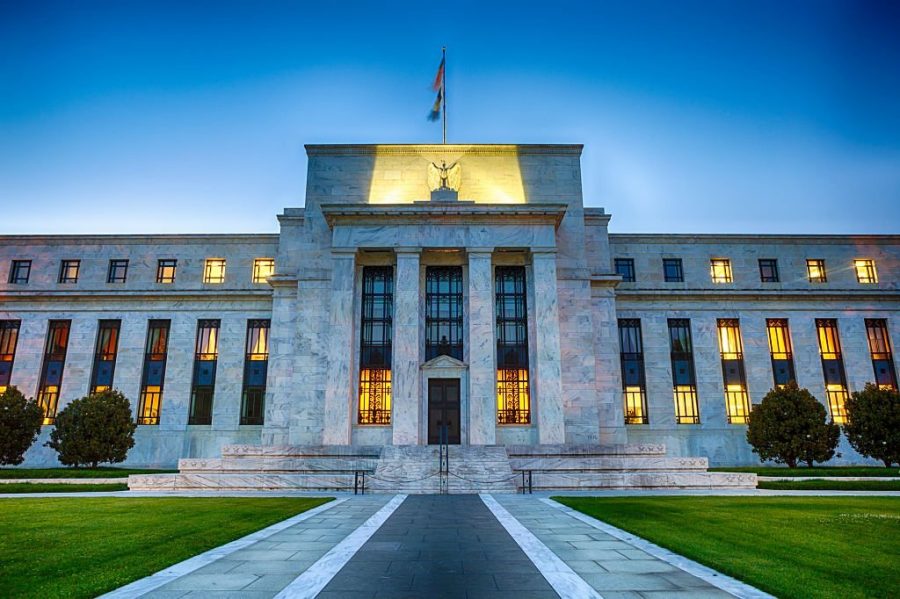OP-ED: Silicon Valley Bank Collapse Highlights the Need for Banking Reform
The Federal Reserve Building in downtown Washington DC, USA at night. HDR image.
April 12, 2023
On March 10, 2023, Silicon Valley Bank (SVB) collapsed in the largest bank failure in US history. A myriad of issues plagued the bank, namely an extremely concentrated depositor base of venture capital and cryptocurrency firms that were dependent on strong economic growth. These issues, though, were exacerbated by the Federal Reserve’s interest hike cycle, which is occurring at an unprecedented velocity.
The benchmark federal funds rate, which dictates the interest rate on things like mortgages and auto loans, increased from .25 % in March 2022 to 4.75% in March 2023. Banks take your deposit money and buy long-dated government bonds; as bond yields have risen and prices have conversely fallen, banks have taken huge losses on their balance sheets.
SVB and other regional banks in turmoil were seeing losses of 25%+ on their bond portfolios, though through an accounting gimmick, they do not have to disclose these unrealized losses. As depositors rush to get their money out to make payroll and rent, the bank is forced to realize those losses, causing a cascade effect that threatens the stability of US credit markets as well as the confidence in the fractional reserve banking system. The Federal Reserve’s attempts to micromanage the economy created these unforeseen challenges.
Silicon Valley Bank had 80% of its depositor base as uninsured depositors, meaning they held accounts above the 250k limit that the FDIC covers. In mid-March, as those deposits stood in limbo, many wondered how they would affect the future of the US banking system. If uninsured depositors were not covered, it could cause a mass exodus from banks into more reliable stores of value, such as T-bills and physical metals.
To avoid this, the FDIC, the Treasury Department, Secretary Janet Yellen, the Federal Reserve, and President Biden said that they would use a “systemic risk exception” to cover the uninsured deposits of SVB and Signature. This was effective as a temporary stopgap but raises profound questions.
If uninsured losses will always be covered, are they really uninsured? And maybe more importantly, how does this affect moral hazard for banks? If banks know that their depositors will be made whole in the event of collapse, they have much more leeway to engage in shady practices and take on risk. Ultimately, they can rely on the government being there to bail them out when things go wrong.
The Fed’s borrowing facility may solve acute cash problems, but it won’t do anything to rebuild the value of banks’ securities portfolios, assuming interest rates stay near current levels. There isn’t a magic number for the deposit insurance to increase to—certainly not unlimited, due to moral hazard. However, $250,000 in 2009, the year the legislation was enacted, is now almost $350,000 in today’s money.
Students should not have to spread their college tuition money across multiple accounts; they should have peace of mind with their bank, whether it’s a regional bank or a large one. As the banking system and government become more intertwined through crisis interventions, the government must ensure people’s savings are protected and confidence in the system remains healthy.
Image Credit to Richard Bett via Flickr

